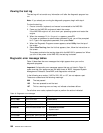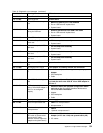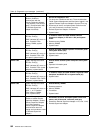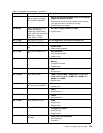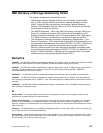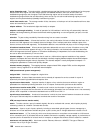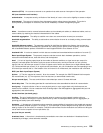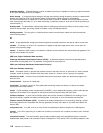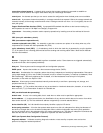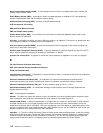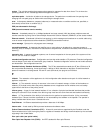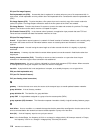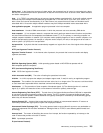active dispatcher node. The engine within a load-balancing group that functions as the load balancer for that group.
Because each NAS engine can have multiple physical and bonded interfaces, there can be more than one
load-balancing engine per set of engines. Each load-balancing engine acts as an active backup for another
load-balancing engine within that set. Alternatively, there can be only one active load-balancing engine per set of
engines and one passive backup (standby) load-balancing engine.
actual data transfer rate. The average number of bits, characters, or blocks per unit of time transferred from a data
source and received by a data sink.
adapter address. The hexadecimal digits that identify an adapter.
adaptive cut-through switching. A mode of operation for LAN switches in which they will automatically alternate
between cut-through switching and store-and-forward switching depending on user-configurable, per port, error-rate
thresholds.
advertise. To pass routing reachability information along from one router to another.
all-routes broadcast frame. A frame that has bits in the routing information field set to indicate that the frame is to
be sent to all LAN segments in the network (across all bridges, even if multiple paths allow multiple copies of the
frame to arrive at some LAN segments). The destination address is not examined and plays no role in bridge routing.
all-stations broadcast frame. A frame whose destination address bits are set to all ones. All stations on any LAN
segment on which the frame appears will copy it. The routing information, not the destination address, determines
which LAN segments the frame appears on. All-stations broadcasting is independent of all-routes broadcasting; the
two can be done simultaneously or one at a time.
alternate adapter. In a personal computer that is used on a LAN and that supports installation of two network
adapters, the adapter that uses alternate (not standard or default) mapping between adapter-shared RAM, adapter
ROM, and designated computer memory segments. The alternate adapter is usually designated as adapter 1 in
configuration parameters. Contrast with primary adapter.
alternate memory mapping. The mapping between adapter-shared RAM, adapter ROM, and the designated
computer memory segments for an alternate network adapter.
ASM (see advanced system management).
assigned disk. A disk that is mapped to a logical drive.
asynchronous. A class of data transmission service whereby all requests for service contend for a pool of
dynamically allocated ring bandwidth and response time.
asynchronous data transfer. A physical transfer of data to or from a device that occurs without a regular or
predictable time relationship following execution of an I/O request. Contrast with synchronous data transfer.
asynchronous transfer mode (ATM). A transfer mode in which the information is organized into cells; it is
asynchronous in the sense that the recurrence of cells containing information from an individual user is not necessarily
periodic. ATM is specified in international standards such as ATM Forum UNI 3.1.
asynchronous transmission. A method of transmission in which the time intervals between characters do not have
to be equal. Start and stop bits are added to coordinate the transfer of characters.
ATM (see asynchronous transfer mode).
attach. To make a device a part of a network logically. Not to be confused with connect, which implies physically
connecting a device to a network. Contrast with connect.
attachment. A port or a pair of ports, optionally including an associated optical bypass, that are managed as a
functional unit. A dual attachment includes two ports: a port A, and a port B. A single attachment includes a Port S.
attachment feature. (1) The circuitry by which some host processors or controllers are connected to a LAN access
unit or connection point. (2) A feature that can be added to enhance the capability, storage capacity, or performance of
a product, but is not essential for its basic work; for example, an adapter that allows a device to attach to a network.
attachment unit interface (AUI). Also known as thick Ethernet, thicknet or 10BASE5. This type of Ethernet
connector has a 15-pin D type connector.
108 NAS 200 User’s Reference



